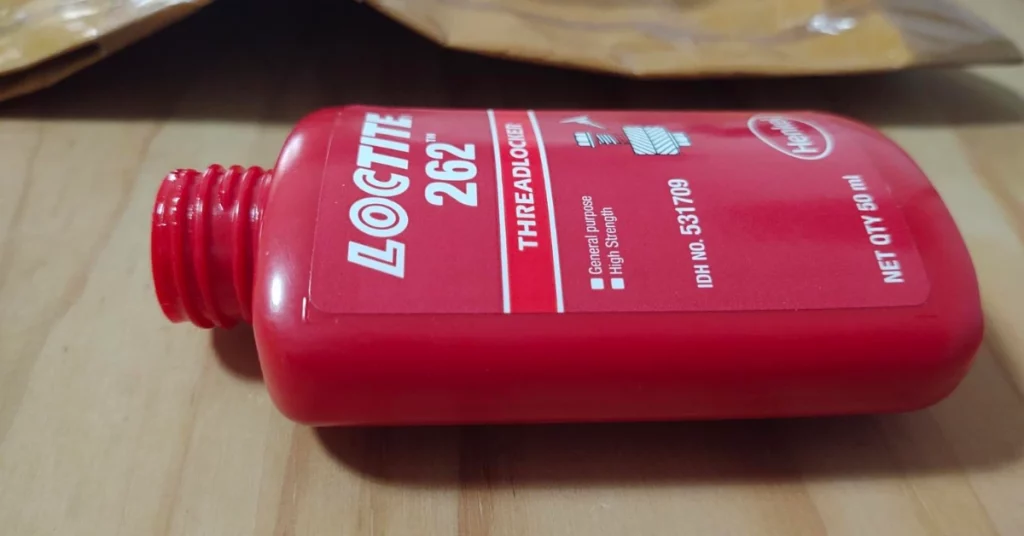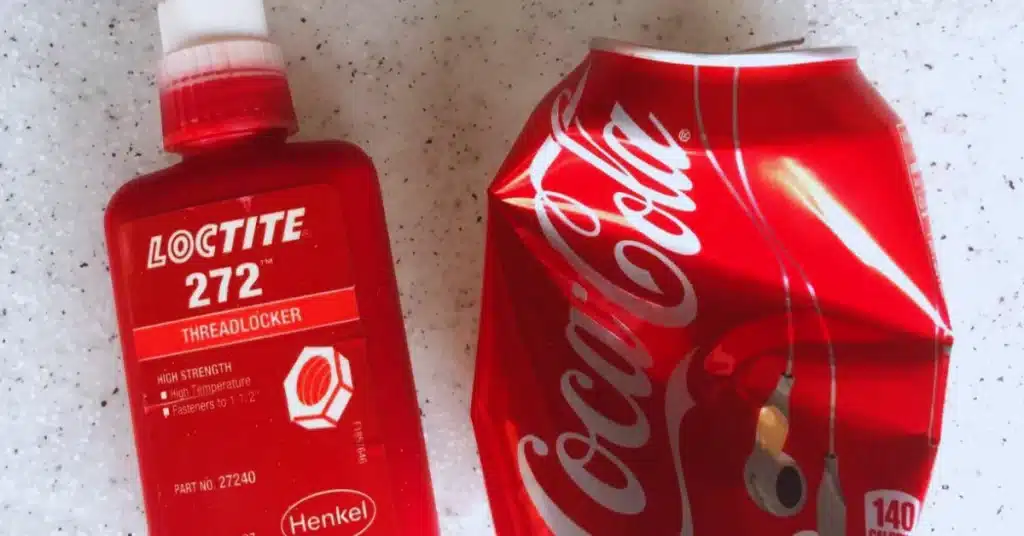Loctite has multiple products if you need a threadlocker to secure nuts, bolts, or other threaded fasteners. Furthermore, Loctite has various segments of threadlockers based on glue strength, intended purpose, and other factors.
Loctite 262 and 272 are Red-colored threadlockers from Loctite-Henkel and have similarities and some differences. In this article, I’ll review the features, specifications, and differences to help you better choose between Loctite 262 vs. 272.
Read More: Loctite 242 vs. 262
Read More: Loctite PL 8x vs. PL Max
Loctite 262 vs. 272
Overview of Loctite 262

Loctite 262 is a red-colored, heavy-strength threadlocker manufactured by Loctite-Henkel. Loctite 262, being in the red, signifies that the glue has permanent adhesion once fully cured and a durable bond.
Loctite 262 cures anaerobically and is based on methacrylate-ester. After you apply Loctite 262, it can take up to 24 hours for a complete cure.
Once cured, Loctite 262 has a permanent adhesion between surfaces and is resistant to vibration and shock. It is also tolerant to contamination from industrial oils like – cutting fluid, anti-corrosion fluid, and other contaminants.
You can use Loctite 262 to prevent nuts and bolts from loosening in components that go through constant vibration, like car parts. You can also use Loctite for industrial machinery, industrial or household pumps, motors bearings, etc.
Loctite 262 is thixotropic and has a medium viscosity of 1000 to 2500 cP. You can easily apply the threadlocker without worrying about the adhesive migrating off the surface of your threaded fasteners.
Loctite 262 forms a permanent bond, and you need solvents and localized heat if you plan to remove your components.
Read More: Loctite 263 vs. 272
Overview of Loctite 272

Loctite 272 is a high-strength threadlocker suitable for threaded fasteners in heavy-duty or industrial applications. The 272 works well with all metals and common substrates like brass, stainless steel, aluminum, etc.
Loctite 272 comes in Red and is a robust adhesive with a shear strength of 3900 psi. You can use Loctite 272 for components with a risk of loosening nuts, bolts, or studs due to shock or vibration. Furthermore, Loctite 272 also has a tolerance for high temperatures up to 232°C and freezing temperatures below -55°C.
You can use the 272 for heavy-duty, industrial, or household applications for pumps, gearboxes, and more. You can use Loctite 272 for various automotive components like – crankshaft bolts, ring gear, shock bolts, etc.
Loctite 272 takes up to 24 hours for a complete cure and creates a robust and permanent bond. If you plan to remove components you used Loctite 272 for, you need some extra materials and preparation like – solvents and applying localized heat on the surface.
Loctite 272 is thixotropic and has a viscosity of 4000 to 15000 cP.
Read More: Loctite 266 vs. 272
Differences Between Loctite 262 And 272
Now let’s examine how Loctite 262 and Loctite 272 differ.
Viscosity
Loctite 262 and 272 have various similar features, but one of their significant differences is in their Viscosity.
Loctite 262 is thixotropic and has a Viscosity of 1000 to 2500 cP. On the other hand, Loctite 272 is also thixotropic but has a higher viscosity of 4000 to 15000 cP.
So Loctite 272 will suit you better if you use the threadlocker for significant gaps or rough surfaces since it’s thicker.
Suitable Size of Fasteners
You can use Loctite 262 for large threaded fasteners, bolts, or studs up to M25.
On the other hand, Loctite 272 is suitable for M25 and larger sizes of screws, bolts, or studs up to M36.
Fixture and Cure Time
Loctite 262 and 272 can take up to 24 hours for a complete cure, and you can speed up the process using an activator.
The fixture time for Steel, Brass, and Stainless Steel for Loctite 262 is 15, 8, and 180 minutes respectively. On the other hand, fixture time for Steel, Brass, and Stainless Steel for Loctite 262 is 10, 5, and 15 minutes respectively.
Loctite 272 has a significantly faster fixture time for Stainless Steel.
What is Loctite 272 used for?
What is Loctite 262 used for?
Last Opinion
So, which one should you go for in the battle between Loctite 262 vs. 272? It depends on your application and the size of fasteners, bolts, or studs you’ll use the threadlocker on.
Loctite 262 suits you if your bolts are up to m25 in size. If you need a threadlocker for fasteners larger than m25, go for the 272. Furthermore, Loctite 262 and 272 both are thixotropic, but Loctite 272 has a much higher viscosity of 4000 to 15000 cP, so if your application requires a higher viscosity adhesive, the 272 is better for you.

